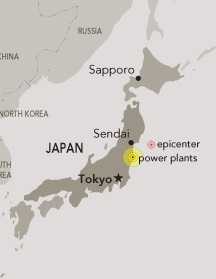RADIATION DISPERSAL FROM JAPAN
NOTE: This page is archived for historical purposes and is no longer being maintained or updated.
Efforts continue in Japan to contain the release of airborne radioactive contamination from the damaged Fukushima Daiichi power plant.
On March 17, President Obama stated: “We do not expect harmful levels of radiation to reach the United States, whether it’s the West Coast, Hawaii, Alaska, or U.S. territories in the Pacific. … Furthermore, the Centers for Disease Control and Prevention and public health experts do not recommend that people in the United States take precautionary measures beyond staying informed.” (http://www.whitehouse.gov/the-press-office/2011/03/17/remarks-president-situation-japan)
Radiation occurs in many forms at low levels as a part of everyday life, from residual cosmic radiation in the atmosphere to medical applications such as x-rays and CT scans. Taking extraordinary steps to prevent exposure to radiation in the absence of a known risk can create problems of its own. For example, potassium iodine pills can cause intestinal upset, allergic reactions, and other symptoms, and should only be taken on the advice of emergency management officials, public health officials, or your doctor.
This page provides information to help workers, employers, and occupational health professionals stay informed about ongoing Federal activities to address the release of airborne contamination from the damaged Japanese power plant. The page will be updated as new information becomes available.
NIOSH is also working jointly with OSHA to provide up-to-date worker protection information. To view OSHA’s page go to http://osha.gov/radiation-japan/index.html.
NIOSHTIC-2 Search
NIOSHTIC-2 search results on Radiation
NIOSHTIC-2 is a searchable bibliographic database of occupational safety and health publications, documents, grant reports, and journal articles supported in whole or in part by NIOSH.
- Page last reviewed: March 21, 2011 (archived document)
- Content source:
- National Institute for Occupational Safety and Health Office of the Director


 ShareCompartir
ShareCompartir
